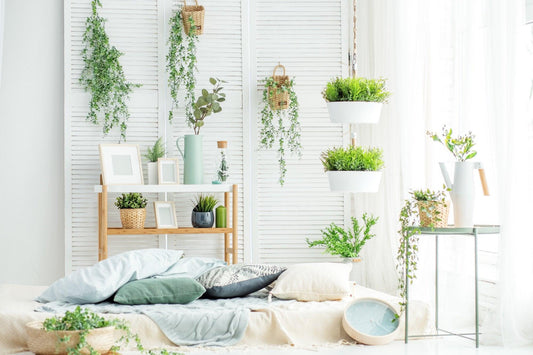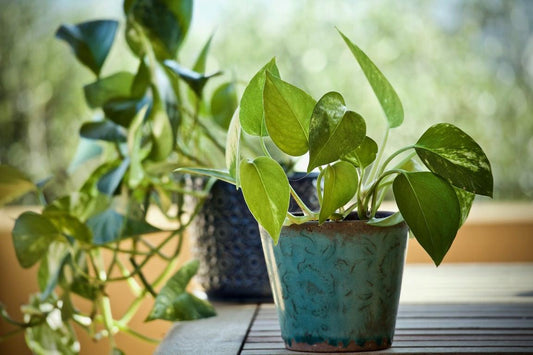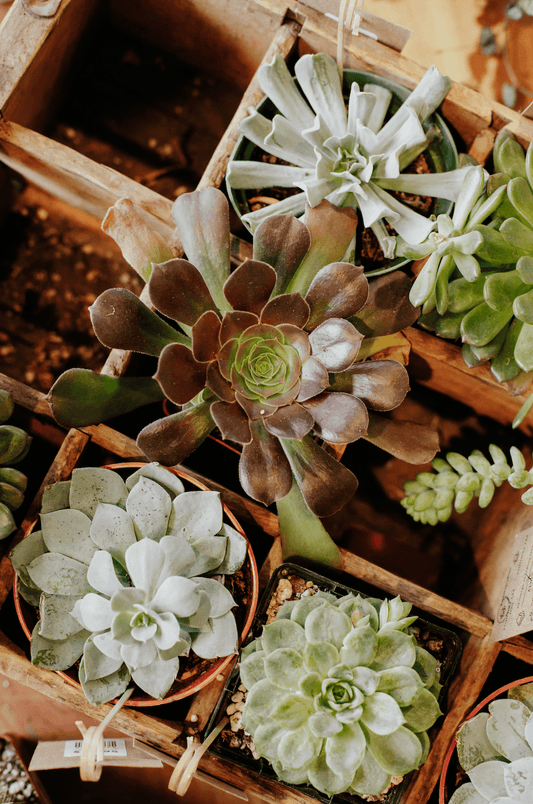If you've spent much time delving into the houseplant communities on Instagram and TikTok, you already know rare plants have gone viral. With people collecting these fascinating species like fine art, some gardeners are ready to spend almost $20,000 for ultra-rare houseplants.
Even for those of us unwilling to drop that much on our interests, rare indoor plants can be colorful and fascinating additions to any room. Of course, that's only true as long as you keep them alive!
Beginners sometimes feel intimidated by these uncommon species, but the truth is that a bit of research and effort is all it takes to make sure your plants are flourishing in no time. Let's look at a few ways to ensure that the rare plant you bring home thrives for years.
Do Your Homework
Every plant species has different care requirements, and rare plants tend to have more subtle differences than most. Even colorful variations on familiar plants you already love, like our Black Zz Plant, may have special requirements you won't expect.
That's why you should always do your homework before you buy a rare indoor plant. Learn as much as possible, and don't be afraid to ask the seller questions, even when shopping online. Most websites provide plenty of tips on indoor plant care for specific rare plants, and online sellers are often happy to chat if you have any concerns.
Finding information about where a plant originates in the world can be one of the most helpful bits of information to gather. Your chosen plant's habitat of origin tells you a lot about what it needs, from the amount of sunlight the terrain gets to the humidity your plant prefers.
You'll also want to research any vulnerabilities to pests or diseases. Certain plant species are more prone to annoying issues like fungal leaf spots, but preventative measures can help keep your plant thriving.
Last, don't forget to consider your pets! Always check to ensure that your chosen plant is pet-friendly enough to bring home to your furry friend.
Fine-Tune Your Growing Environment
Once you have a better idea of your plant's needs, it's time to recreate its natural environment inside your home as best you can. This means focusing on a few key areas:
Lighting
Every plant has unique light requirements, but some rare plants can be more finicky about them than others. This is especially true when your plant has a color variation called variegation that makes its leaves darker or brighter than common plants of the same species. Plants with white or lighter colored leaves prefer brighter environments to those with green or darker colored leaves. Additionally, leaves with red undersides can live in slightly lower light conditions because the red leaves reflect light back into the plant for better photosynthetic possibility.
Soil Mix
Again, your research into your plant's ideal environment will help here. Desert plants from dry climes may need airy, well-draining soil, while tropical plants from waterlogged areas may want soil that traps more moisture. You may also want to combine different mediums like coco coir, perlite, or vermiculite into your soil to help with drainage.
Humidity
Many tropical rare plants, like our Philodendron Panda, will grow better in high-humidity environments. Following these requirements can be one of the trickier parts of indoor plant care, especially for beginners.
Depending on the plant, a simple misting with a spray bottle may be enough to keep it happy. If you don't want to do this every few hours, a pebble tray full of water can help, or adding a humidifier to your space.
If you have several rare plants that need high humidity, placing them together can create a tiny microclimate in your home. This can trap moisture around the plants.
For rare plants that need even more humidity, placing them in the bathroom is a safe bet. The constant flow of daily moisture from your shower or sink can make this an ideal environment, especially in the drier winter months.
Pay Attention to your Plant's Needs
Part of the fun of growing rare houseplants is the challenge: this type of plant maintenance can be interesting and fun. However, the last thing you want to do is let your plant's health suffer by forgetting its needs!
Watering is the most important part of your plant's care. Make sure you're checking the soil as needed for the type of rare plant you own, and water it accordingly. Keep in mind that most plants' watering needs will shift from summer to winter.
In addition, don't forget about your rare plant's seasonal needs!
Most plants love a good cleaning once every season or so to get rid of household dust that has built up on their leaves. You may also want to fertilize your plants to ensure they are getting all the nutrients they need, and can live up to their fullest potential. Last, don't forget to prune your plants at the beginning of each growing season. Getting rid of damaged, dead, or diseased leaves can help encourage healthier growth. It can also keep your plant's shape looking more balanced and attractive.
Know When to Troubleshoot
No one likes coming home to a dry, yellowing, or drooping plant, but it happens to the best of us. Though research and planning can help with plant care, rare plants often tell us when there's something wrong with their environment.
Make sure you pay attention to your plant's response to the care you provide, especially right after you've brought it home. Its growth patterns and leaf color can help you understand how it's adjusting to its new conditions.
Yellowing or browning leaves, stunted growth, and wilting are all common signs of stress. When you notice these red flags, play around with your plant's environment to see what's working and what isn't.
Make the Most of Your Rare Indoor Plants
Rare indoor plants can add a pop of beauty and interest to any room. Though caring for them can take a bit of extra knowledge and effort, even beginners can enjoy these fun and unusual plants.
If you're ready to join the community of uncommon plant collectors, we'd love to help! Check out our list of rare and uncommon indoor plants to find your next favorite houseplant.




